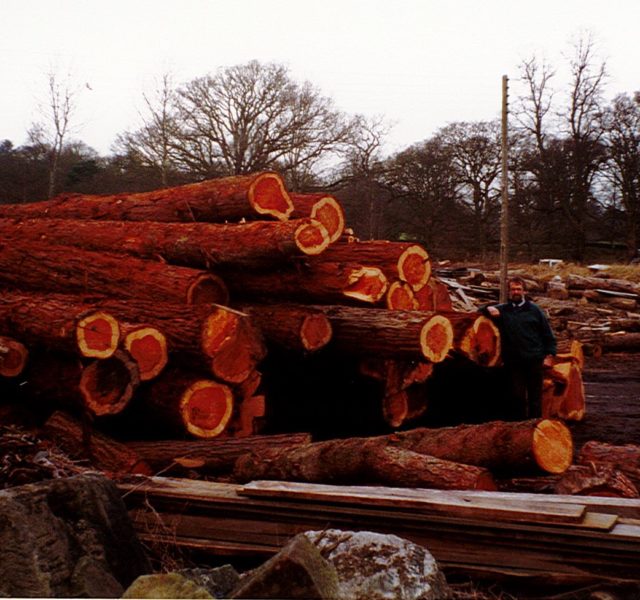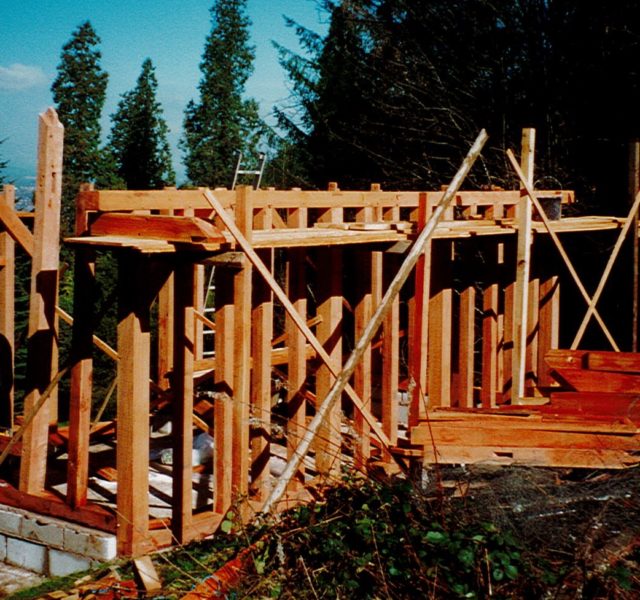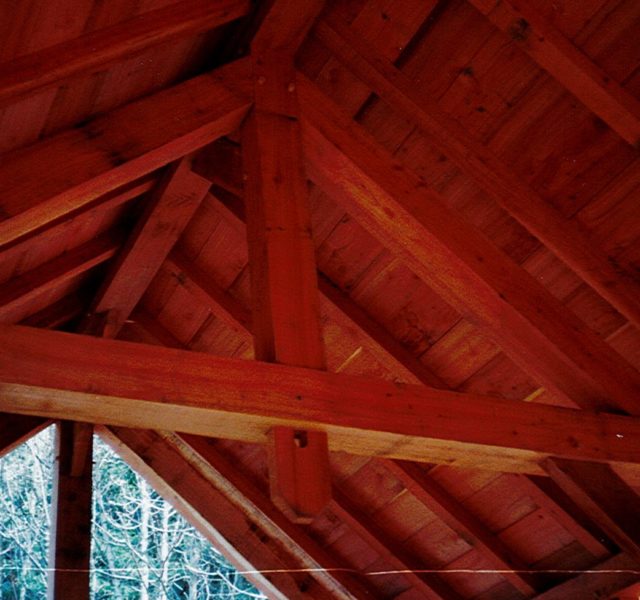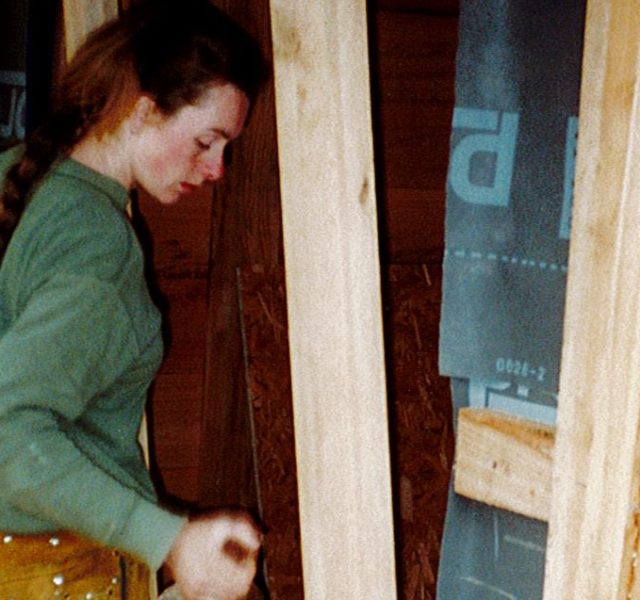Lasting the test of time: Leighton Coast Redwood Chalet 20 years on
CASE STUDY 2020 Building in Coast Redwood: Leighton chalet at 20 years old

Coast Redwood chalet at 20 years old
The enchanting 20 x 10 chalet at our Charles Ackers Redwood Grove and Naylor Pineton at Leighton in mid Wales was a ground breaking millennium project, receiving a Timber Industry Award in 2001 for excellence of design and construction.
For the past 20 years it has been much used and loved by RFS members and groups visiting the wood.
Timbers used
In 1999 the RFS agreed a new chalet was urgently needed to replace a 30-year-old structure that was in poor repair. Off-the-peg chalets of the size required were prohibitively expensive and unattractive. A thinning of the 1934 Coast Redwoods (Sequoia sempervirens) plantings at Leighton was scheduled for spring 2000 and it was agreed the solution lay in using the thinnings – an unusual choice of timber at the time.
Traditional carpentry specialists the Russell brothers designed and built the chalet using hand tools. ‘Green’ Coast Redwood was used for the frame, Welsh oak for the doors, window frames and the balcony. Larch cladding from Gloucestershire was donated by Torril Freeman (daughter of Charles Ackers who had gifted the woodland to the RFS) and Gloucestershire grown Western Red Cedar shingles were used for the roof.
How has it fared
Twenty years on and the chalet is looking as good as the day it was unveiled and is aging well. The timber’s natural tannins and chemicals make it naturally durable to weather, flame retardant and resistant to insect attack – ideal for its often shaded position in an area of Wales where annual rainfall can be high.
The roof shingles were replaced in 2017 with shingles from Herefordshire.
Designing and building the chalet
Coast Redwood timber is not as structurally strong as oak. To compensate the design used larger timbers to ensure strength and integrity.
Building using green timber gave a window of just six weeks from thinning to construction. In May 2000 a team from Powis Estate sawmill felled, crosscut and extracted 40 marked Coast Redwood trees under the supervision of Leighton warden David Williams.
While the timber was being felled and processed a solid base was constructed to take the building.
The main structural elements of the chalet can be seen on the inside. It is held together with clearly-visible cleft oak pegs, which pin the numerous draw-borne mortise and tenon joints, scarf joints and lap dove tails. Cross frame construction carpentry techniques used to make this structure involved the ‘framing up’ horizontally of all the individual walls of the building in a logical succession. For each wall, the component timbers were laid out on top of each other to be marked out. Then they were cut, assembled, numbered, disassembled and stacked ready for the final ‘barn raising’.
The Russell brothers found Coast Redwood to be a very stable timber with little movement and shrinkage in either the frame or the internal boarding.
Because of its natural preservatives, the timber did not have to be treated and the external vertical boarding and cover strips were made of another naturally-resistant softwood, the larch tree (Larix decidua).
The original roof cedar shingles had been based on examples from the west coast of Scotland and were much thicker than the cedar shingles normally imported from Canada in the hope, ultimately not realised, that they would last longer.
The future
The latest thinning of the 1934 Coast Redwoods took place in 2019/2020. The timber is being processed at a small sawmill in Worcester whose customers include house builders using Coast Redwood for exterior cladding, designers creating stunning resin tables and a company specialising in eye-catching structures for outdoor play and learning spaces.
Coast Redwoods are often cited as one of the nonnative species which may have the potential to become a more regular feature in our UK woodland – helping build resilience against pests and disease and helping them adapt to climate change.
Forest Research suggests they are probably best suited to Wales and SW England in areas with more than 1250 mm rainfall and on poor to medium soils. As fast growing trees they may have a future role to play in flood alleviation schemes and in carbon lock up as well as for their timber.
More information
QJF April 2001: The New Redwood Chalet at
Leighton: A Brief Guide by John and Henry Russell
Using Coast Redwood: Case study based on
2019/2020 thinning
Our woods: Charles Ackers and Leighton Pineton
Pictures courtesy of warden David Williams





